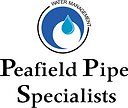The oil and gas industry is a complex and high-risk sector that demands utmost precision and safety in every aspect of its operations. One critical process that plays a pivotal role in maintaining the integrity of oil and gas infrastructure is hydrostatic pressure testing. This testing method ensures that pipelines, vessels, and other crucial components can withstand the extreme conditions they encounter during their operational lifespan. In this article, we will delve deep into the world of hydrostatic pressure testing, exploring its significance, procedures, and its paramount role in ensuring the safety and reliability of the oil and gas industry.
The Significance of Hydrostatic Pressure Testing
The primary goal of hydrostatic pressure testing is to validate the structural integrity and safety of pipelines, tanks, and various equipment used in the oil and gas sector. The significance of this testing method cannot be overstated, as the consequences of equipment failure in this industry can be catastrophic. It helps in identifying and mitigating potential weaknesses or defects in the equipment, ensuring that it can withstand the high pressures and corrosive substances it will be exposed to during its operational life.
Moreover, regulatory bodies and industry standards often mandate hydrostatic pressure testing as a mandatory procedure. Compliance with these standards is not only a legal requirement but also a moral obligation to protect the environment, workers, and surrounding communities.
The Procedure
The hydrostatic pressure testing process involves subjecting a piece of equipment or pipeline to pressure higher than its maximum operating pressure. This overpressure test is conducted under controlled conditions to simulate the most extreme scenarios the equipment may face during its operational life. The key steps in the procedure include:
Preparation: Before the actual test, meticulous planning is crucial. This includes selecting the appropriate testing medium (usually water), preparing the equipment, and ensuring safety measures are in place.
Filling and Pressurization: The equipment is filled with the testing medium, and pressure is gradually increased to the desired level. The rate of pressure increase is carefully monitored to prevent sudden stress on the equipment.
Stabilization: Once the desired pressure is reached, the system is allowed to stabilize for a specific duration. This step helps identify any potential leaks or deformations.
Hold Period: During this phase, the pressure is maintained at the test level for a defined period. The equipment is closely monitored for any pressure drops or signs of failure.
Depressurization: After the hold period, the pressure is slowly released, and the equipment is carefully inspected for any signs of damage or leakage.
Evaluation: The test results are thoroughly analyzed to determine whether the equipment has passed or failed the test. Any anomalies or failures are documented and addressed.
The Role of Technology in Hydrostatic Pressure Testing
Advancements in technology have revolutionized hydrostatic pressure testing. Modern testing equipment and data analysis tools have made the process more efficient, accurate, and safer. High-precision instruments can measure pressure and temperature with utmost accuracy, while automated systems can control the test conditions and record data in real-time. This not only enhances the reliability of the test but also reduces the potential for human error.
Furthermore, digitalization has allowed for the integration of testing data with predictive maintenance systems. This means that equipment can be monitored continuously throughout its operational life, and any deviations from the expected performance can be detected and addressed proactively, reducing the risk of catastrophic failures.
Safety First
Safety is paramount in the oil and gas industry, and hydrostatic pressure testing is no exception. The high pressures involved in these tests can pose significant risks if not managed properly. To ensure safety during testing, several precautions are taken:
Qualified Personnel: Only trained and certified personnel should perform hydrostatic pressure tests. They are well-versed in the procedures, safety protocols, and emergency response measures.
Pressure Relief Systems: Adequate pressure relief systems are installed to prevent over-pressurization. These systems automatically release pressure if it exceeds safe limits.
Safety Barriers: Physical barriers are put in place to protect personnel in case of equipment failure. These barriers ensure that testing areas are secure and restricted.
Emergency Response Plan: A comprehensive emergency response plan is in place, detailing the actions to be taken in case of unexpected events, such as equipment failure or leaks.
Regular Inspection: Safety equipment, such as pressure relief valves, is regularly inspected and maintained to ensure their effectiveness.
Conclusion
In the oil and gas industry, where safety and reliability are non-negotiable, hydrostatic pressure testing stands as a critical procedure. It serves as the ultimate quality control measure, ensuring that pipelines, tanks, and other equipment can withstand the extreme conditions they will encounter during their operational life. With the aid of advanced technology, hydrostatic pressure testing has become more precise and efficient, enabling the industry to maintain its commitment to safety and environmental protection.
As the oil and gas sector continues to evolve, so too will the methods and technologies used in hydrostatic pressure testing. Innovations in materials, testing procedures, and data analysis will further enhance the industry’s ability to detect and prevent equipment failures, ultimately safeguarding the environment and the well-being of workers and communities. In this high-stakes industry, hydrostatic pressure testing is not just a process; it is a lifeline that ensures the world’s energy needs are met safely and reliably.
